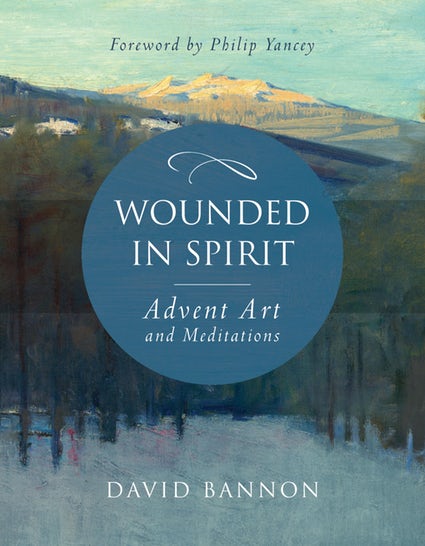Despite the fact that we live in an age where we are technologically tethered, many of us feel disconnected. Collectively, we have lost the requisite skill to carry on a conversation, particularly with people who are different than us. Online, we mute the voices that challenge us. Offline we flock with birds of a feather. We are a fragmented people,simultaneously more connected than previous ages, and yet typified by a profound sense of alienation.

C. Christopher Smith is at the forefront of helping the church recover the art of conversation. He is a part of Englewood Christian Church, in the Englewood neighborhood of Indianapolis, which has hosted weekly congregational conversations for over 2 decades. Smith also has enriched conversation in the wider Church around the themes of community, reading and the common good. He is the author of Slow Church (with John Pattison), Reading for the Common Good,and as the editor of the Englewood Review of Books—a print and online journal that reviews books which they flag as valuable for the people of God. His newest book, How the Body of Christ Talks, is designed as a practical guide to help the church recover the art of conversation.
In chapter 1, Smith begins by laying out ‘the theological roots for conversation,’ (e.g. the mutual indwelling of the Trinity, a culture of reciprocity, the Christian practice of hospitality and the biblical vision of unity in diversity, the church’s role in incarnating Christ, and need for intentionality). These ‘big ideas’ cast a vision for a Christian dialogue and conversation.
In part 1, Smith gets practical, describing how churches can delve into the practice of conversation. In chapter 2, he desribes the dynamics of conversation (e.g. the size of the group, the degree of homogeneity, and the virtues and challenges of formal and informal conversations). In Chapter 3, Smith discusses what topics we should talk about as we convene a conversation. He suggests that when churches start practicing conversation, they don’t start with ‘abstract matters or highly charged topics,’ even if these are things that are worthwhile to discuss down the road. Instead Smith suggests that one possible starting point for conversation ‘might need to be about why we should talk together, thus creating a space for listening carefully to those who are hesitant, confused, resistant to the idea of conversation.’ In Chapter 4, Smith turns to the healing potential of conversation and reviews three models for structuring the conversation (Open Space Technology, Appreciative Inquiry, and World Cafe).
In part 2, Smith discusses the ‘spirituality of conversation’ highlighting practices which will nurture our conversations. Chapter 5 explores conversation as ‘a prayerful way of being’ and describes how the prayer practices of corporate prayer, silence, listening prayer, binding, praying without ceasing and expectancy prepare us to be able to engage well with one another. Chapter 6 explores how we can abide with others through the messiness of life. Chapter 7 invites us to prepare our whole selves for conversation (hearts, minds, body).
Part 3 describes ways we can sustain the conversation, mindful of our church’s mission and identity (chapter 8), how to stay engaged and engage well through conflicts and disagreements (chapter 9), and how to emesh ourselves in the dance of community (chapter 10). A conclusion invites the church to bear witness through conversation and communion in the midst of our fragmented age.
Throughout the book, Smith weaves together stories of his church and other churches who are practicing conversation. Granview Calvary Baptist in Vancouver is highlighted as a church that engaged this conversation around LGBTQIA community with some members affirming and others taking the traditional stance (and their denomination’s stance). While the differences between ‘the sides’ remained important, through their conversation they were able to make a statement on human sexuality which both sides could affirm. Other churches and intentional communities share their wisdom in setting ground rules and framing conversation (these are included in an appendix).
One of the things I really appreciate about Smith’s work, is how he weaves together thoughtfulness and practicality. We are at a culture moment where we are ideologically and politically divided. Smith describes the nature of conversation and gives good suggestions for pursuing an ecclesially rooted conversation which will enrich both our churches and our wider communities. This book will be fruitful for churches and intentional communities as they seek to listen and speak well together.
Notice of material consent: I reviewed this book with an electronic advanced review copy provided by Net Galley. The book is good and I am also procuring my own physical copy.

 John of Patmos’s Revelation is esoteric and strange. It has inspired hope and dread, beautiful art and Christian kitsch, good poetry and bad fiction. Michael Straus
John of Patmos’s Revelation is esoteric and strange. It has inspired hope and dread, beautiful art and Christian kitsch, good poetry and bad fiction. Michael Straus







 April Yamasaki is an Asian-Canadian Mennonite Pastor, speaker, and author. She is a fellow alumnus of
April Yamasaki is an Asian-Canadian Mennonite Pastor, speaker, and author. She is a fellow alumnus of